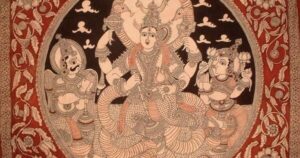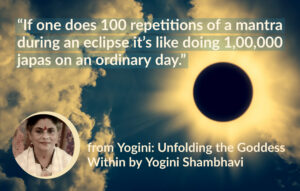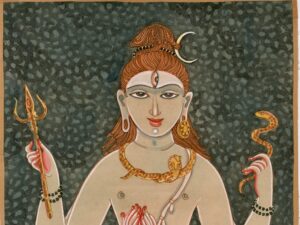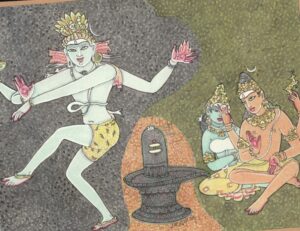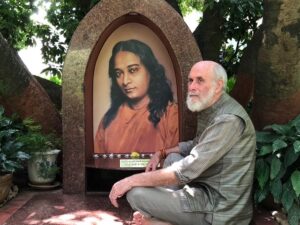Modern western examination of the Vedas and the ancient history of India has been colored by the search for an original European identity, the so-called Aryans. This has subordinated Indian history and tradition to a proposed Indo-European people and culture placed in Eastern Europe or Central Asia. This places the Vedic culture of India outside of India and has been used to interpret Vedic texts apart from the Indic tradition that has preserved them. Though existing archaeological and genetic evidence is contrary to any Aryan invasion/migration into India, there is a great reluctance to give up this theory.
Search for European identity
Starting with the Renaissance, Europeans began examining their pre-Christian roots in Greek and Roman culture. This continued as a major trend in western thought into the nineteenth century when the Greeks became regarded as the founders of true civilization. The Greeks were hailed as the inventors of science, democracy, logic, medicine, history that became the hallmarks of western civilization and its powers and insights. Alexander the Great was viewed as having brought civilization to India, whose northwest corner he temporarily conquered, though his own records honored the long existing civilization his armies found in India and the many sages there.
This adulation of the Greeks opened the door for a search for the roots of all European peoples. This became what we could call the search for the ‘original Europeans’, with the Greeks becoming one branch of a greater ancient European culture. European scholars sought the roots of the European peoples and civilization as an entity in itself. They rejected the existing Judeo-Christian idea of European civilization as a product of Near Eastern civilization and sought some origin for it in Europe or Central Asia.
This search for the original Europeans arose as part of nineteenth century ideas of the superior white or European race, as opposed to weaker and inferior African, American and Asiatic types, whom the Europeans had recently colonized, were ruling and seeking to convert. The search for the original Europeans became allied to a new European nationalism that arose along with the formation of new nation states. It became particularly strong in German thought, and later virulent in its Nazi forms.
This search for the original Europeans needed a foundation on which to structure itself. It was proposed in a recognition of the connections between European languages, the postulating of an Indo-European family of languages, linking together the main languages of Europe.
Not only were the classical languages of Europe of Greek and Latin related, but so were the Germanic, Slavic and Celtic tongues among many others, the languages of the great majority of modern and ancient Europeans. It was not only languages that were related in vocabulary and grammar, but also cultural and religious ideas as reflected in their myths, stories and practices of worhship.
Aryans and their Proposed Homeland
This linguistic-cultural connection led to the idea of a Proto-European homeland, some original European people as an ethnic or cultural type whose migration over time resulted in the creation of different European groups, cultures and nations. The idea of the original Europeans as a specific linguistic, cultural and ethnic type arose, the so-called ‘Aryans’, originally formulated as white Europeans speaking a pure European tongue with a unique seed culture that could later blossom as the great civilizations of Europe. Through this idea, Europe discovered an identity of its own that was ancient and based upon language, mythology and ethnicity. This was a very compelling idea for the colonial mind. A mythology of the original Europeans, their homeland and culture was created and elaborated over time.
Reflecting the European nationalism of the times, the scholars of the different countries of Europe s argued about the details of the original Europeans, vying for the location of its original homeland. The Germans saw them as proto-Germans, the Russians as proto-Russians, others as proto-Celts and so on. These proto-Europeans or Aryans were defined ethnically as blond, blue-eyed and white. The Nazis regarded them as the master race and sought to maintain the purity of their blood. Others scholars viewed them more culturally or linguistically than as an ethnic group.
However, this search for the original Europeans encountered a major problem. The languages of Europe were connected to many other languages of West and South Asia, including the languages of India and Iran, which meant to languages of non-Europeans who had ancient civilizations of their own along with their own history and sophistication.
The oldest, largest and most sophisticated literature of the ancient Indo-European languages was found in the Vedic texts of India, which the Europeans had recently encountered. The discovery of Sanskrit allowed European scholars to connect European languages together in the first place. This Vedic Sanskrit was a quite profound and detailed language poetically and grammatically. Vedic texts also reflected many of the same deities and mythologies as the European but with greater complexity and variability. Indeed some European scholars proposed that the Vedic people were the original Aryans and that Sanskrit was the mother of all languages.
The problem was that Indian civilization was very far removed from that of Europe. India’s civilization was more spiritual, mystical and had a very different historical development. Problematically for the nineteenth century European mind, the Indians were dark-skinned, among the very people the Europeans had recently conquered and colonized and regarded as inferior. It was certainly not easy for the European mind of the time to accept that the Proto-Europeans were possibly even an offshoot of India and its older civilization.
Euoropeanization of the Vedas and Sanskrit
This led to a process, of what I would call ‘the Europeanization of the Vedas’. Its main goal is to uphold the European roots of the Indo-European languages and cultures by making the original Vedic and Iranian peoples later offshoots of the Proto-Europeans and migrants from their original location in Europe or Central Asia. Instead of seeing India and Europe connections as part of a greater common heritage, with India having an important role, India’s contribution was removed and taken outside the region.
This intellectual trend occurred in two ways. Firs,t European scholars postulated that the Vedas originated in Europe or Central Asia and were brought into India at a late ancient period (c. 1500 – 1000 BCE) by invading European people, the so-called Aryans, who were fair skinned, perhapsvblond and blue-eyed, aided by their superior technology of horses, chariot and iron and overthrowing the indigenous people of the region. The original Vedic people were regarded as more European than Indian with their influence only later absorbed by the existing dark skinned population.
From this view, it was an easy step to claim that the ancestor of the Vedic language, Sanskrit, was also originally more European than Indian that came to be Indianized only after the Aryans reached India and were absorbed with the native peoples. They called this hypothesized ancestor language Proto Indo-European and claimed that Sanskrit was a later branch of it. There has since been an effort to reconstruct this Proto-Indo-European or PIE tongue on linguistic grounds.
To bring this about, European scholars rejected the traditional Indian scholarship of the Vedas, though it was very ancient and massive. They reinterpreted the Vedas in light of European languages, mythologies and cultural concerns, removing them from their Indian context. This resulted in a new western scholarship of the Vedas in which Sanskrit and Vedas were made subordinate to Indo-European studies. It not only rejected traditional Indian scholarship of the Vedas, it also rejected any modern Hindu scholarship of the Vedas and its contemporary teachers like Swami Dayananda of the Arya Samaj or Sri Aurobindo, the great yogi.
The Vedas were taken out of India in terms of their place of origin and also in terms of the ideas used to understand them. European scholars placed the Vedas outside of both India and Indic thought ,as if they were a product or offshoot of the same Proto-Europeans they speculated about. The European identity of the Aryans was preserved, the sophistication of Vedic literature and its impact on India notwithstanding.
Such European scholars approached the Vedas through their training in European culture, with a knowledge of Greek and Latin, comparative European mythology, modern linguistics and related intellectual tools. They had little respect for Hindu methods of approaching the Vedas on a spiritual level through ritual, mantra, meditation and yoga. As a result, what they saw in the Vedas was very different than the Vedic tradition in India, more European. Over time they came to rely on their own European translations and interpretations of the Vedas as authoritative. Their knowledge of the original language, Sanskrit, consisted of a linguistic deconstructionism, a comparative study of roots and words, not a cohesive literary interpretation of the text and its teachings, all pointing to their Proto-Indo-European theory.
The main thing to note from this is that the European estimation of the Vedas, even to the present day, is just an offshoot of their greater concern for discovering the original Europeans. The Vedas were not looked upon in their own terms. The result is that Western scholars look at the Vedas in light of European thought and culture, which is their real concern.
Non-Vedic origin of Indian civilization
At the same time, these scholars must postulate some indigenous non-Aryan peoples of India to ascribe India’s civilization to, which clearly goes back long before the Greeks or any other European peoples and their cultures, and has been archaeologically documented as quite extensive and sophisticated already in the urban Harappan era of the third millennium BCE. Should they ascribe India’s ancient civilization to the Vedic people, their whole concept of the original Europeans and their homeland would be suspect.
It is because of this fixation on the search for the original Europeans that western scholars are so adverse to any efforts to bring the Vedic people and culture into India, particularly to equating the Vedic culture with the ancient people of India through the Indus Valley or Harappan culture, which many Indian and some western scholars have suggested makes more sense. The outside India basis for the Vedas has become almost an article of faith of modern European thought so that the roots of European culture and Indo-European languages can remain in Europe or in proximity to it, not in India.
It is their focus on the original Europeans that prevents western scholars from really understanding the Vedas or correcting their view of Vedic history. In this regard, let us look at what has happened to the Aryan theory since it was first postulated relative to finds in India. Note that I am presently this material only briefly as it is already covered in previous books and articles (Vedic Aryans and the Origins of Civilization, Rajaram and Frawley; In Search of the Cradle of Civilization, Feurstein, Kak and Frawley; the Oldest Civilization in South Asia, B.B.Lal, etc.), and will be the subject of some upcoming books and articles as well.
Today the genetic and archaeological evidence does not show any invasion or migration of Aryans or European like people in ancient times that could have brought the Vedic language or culture into India. A closer examination of Vedic texts show that the Vedas reflect the geography of India when the Sarasvati river dominated the west of the country, a river that dried up around 2000 BCE or long before the proposed Aryan invasion of 1500 BCE. Harappan sites are mainly centered on the Sarasvati River that flowed east of the Indus. Common symbols in them include the swastika symbol, Vedic fire altars, Brahma bulls, figures in yoga postures and many other Vedic and Hindu symbols. Meanwhile efforts to prove any evidence of invasion/migration in Vedic texts have also failed, with the texts emphasizing a culture with deep roots in the land of North India, particularly the Sarasvati River.
Yet western scholars still insist on the non-India origin for the Vedas and place them in Central Asia or even Europe. They now bring them in by way of linguistic changes, not through the old idea of large migrations or invasions that have been discredited. They propose a change of language and culture change with the people remaining largely the same, a migration more of language than people. In other words, though the hard data they proposed for the invasion/migration has not been found, they are still holding to their theory as if it did not require any real evidence to prove itself. The reason they cannot let go of this need to keep the Vedas out of India is arguably because of their cultural bias for the original Europeans.
Should the Vedic culture be placed in India or made the basis of the Harappan civilization, the great urban civilization of India that flourished on the Sarasvati river from 3100 – 1900 BCE, then the whole edifice of European scholarship about the original Europeans would have to be totally recast. The roots of ancient European culture would have to move towards India.
As scholars challenge the Europeanization of the Vedas, they are bound to meet with a stiff cultural resistance, even from western scholars who have never studied the Vedas. These scholars will naturally ally with other European scholars, with whom their share a common mindset. Their views require that they control the location and interpretation of Vedic culture, not for an understanding of Indian civilization but for maintaining their ideas of the original Europeans. It is not an issue of Indian history that drives them but of European history.
These ‘European’ scholars, which include a category of Europeanized Indians, are mainly interested in European culture and languages. They look at India and its Sanskritic and Vedic traditions in the distance, according to European interpretations through comparative mythology, linguistics, psychology or political and economic (caste and class) theories. They are suspicious of scholars who actually are rooted in the Vedic and Indic tradition and see things in a different light than they do. They don’t bother to connect the Vedic tradition east and south into India and Asia, though there is much evidence in these directions as well, but continually draw them only into the north and west.
It is this battle between those who claim a non-Indian and an Indian origin for the Vedas that we see today. Yet the Europeanization of the Vedas is at least being questioned now. In fact the whole concept of the Aryans is being questioned as well (as Aryan in Sanskrit is a term of respect, not one of ethnicity).
Once we take the Vedas back into the Indian context, in which alone we can really understand them, we will gain a new and more spiritual view not only of India but also of all humanity. But it will require that scholars have to recognize that ancient European culture may have a connection to India.
This issue is likely to take decades to resolve. It will be a long drawn out struggle that is likely to be resolved only when a new generation takes up the challenge. The reason is, to summarize, is that the issue is fundamental not only to the ancient history of India but to that of Europe and much of the rest of the world. It is a clash not only at the level of historical information but of civilizational views as to what history really means.

